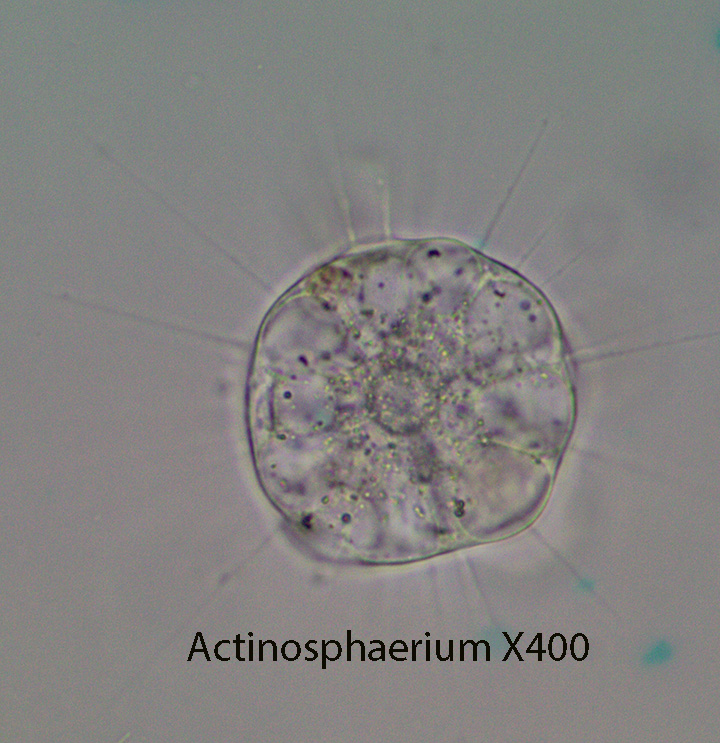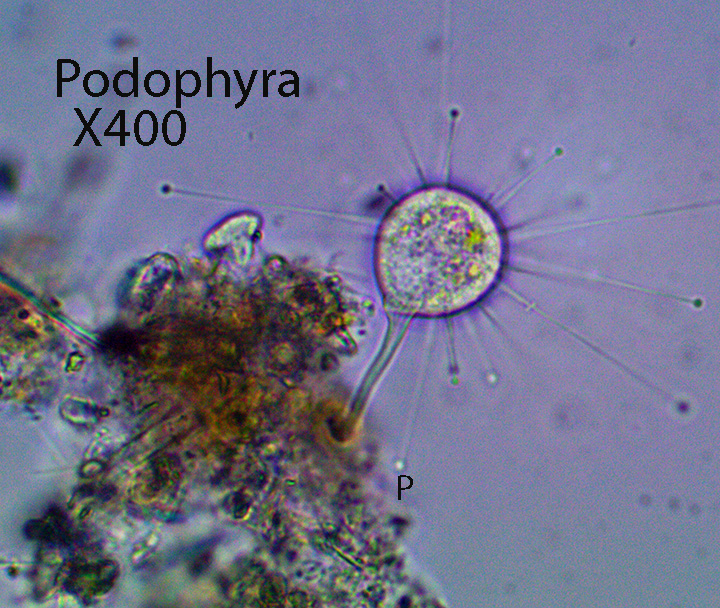Heliozoans
Heliozoans are microscopic protozoans that possess firm projections (Axopods) that radiate outward from the cell surface. They feed on a variety of ciliates and other small invertebrates. Prey stick to the axopods and afterwards a pseudopodium forms a food vacuole around them.
1. Actinophrys

Actinophrys, with a cell body about 100 microns in diameter, is characterized by axopods that taper to a fine pointed tip. The heliozoan has a visible round, centrally located nucleus. Clear food vacuoles are visible along the inside of the cell membrane. A contractile vacuole is visible as a clear bubble next to the cell membrane. They feed for the most part on small protozoans.
2.Actinosphaerium

Actinospherium , with a cell body about 400 microns wide, is characterized by a peripheral layer of large, rounded vacuoles. The multinucleated cells have a number of axopods that taper from the base to the tip, radiating from the cell surface. Both unicellular green flagellates and small rotifers were identified in food vacuoles.
3.Raphidocystis

Raphidocystis, with a cell body less than 100 microns wide, is characterized by flat scales that cover the cell body and axopds that have parallel sides (not tapered) and are trumpet-shaped (Note how the tip looks like the flared outer portion of a trumpet)
Suctoria
Podophyra

Suctorians belong to a group of ciliates that have lost all cilia during early development and have become permanently attached to the substratum by means of a non-contractile stalk. The cell body, about 60 microns in diameter has numerous, long, tubular tentacles each with a rounded tip. Each tentacle has a “mouth”. Tentacles capture prey (Ciliates, flagellates, small rotifers, etc.), immediately immobilize them, and then suck out the insides of their prey.




Leave a comment